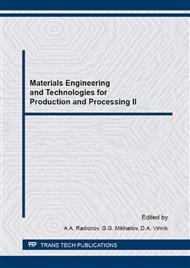[1]
Information on http: /www. transportation. anl. gov/pdfs/TA/339. pdf.
Google Scholar
[2]
M. Frondel, J. Peters, Biodiesel: a new oildorado? Energy Policy. 35 (2007) 1675-1684.
DOI: 10.1016/j.enpol.2006.04.022
Google Scholar
[3]
C. Hamelinck, Ethanol from lignocellulosic biomass: techno-economic performance in short-, middle-, and long-term, Biomass and Bioenergy. 28 (2005) 384-410.
DOI: 10.1016/j.biombioe.2004.09.002
Google Scholar
[4]
J. Hill, Environmental, Economic, and energetic costs and benefits of biodiesel and ethanol biofuels, Proceedings of the National Academy of Sciences. 103 (2006) 11206-11210.
DOI: 10.1073/pnas.0604600103
Google Scholar
[5]
T. Schmitz, Brazil's ethanol program: the case of hidden subsidies, International Sugar Journal. 105 (2002) 254-265.
Google Scholar
[6]
M. Babiker, Is emissions trading always beneficial, Energy Journal. 25 (2004) 33-56.
Google Scholar
[7]
B. Felzer, Effects of ozone on net primary production and carbon sequestration in the conterminous United States using a biogeochemistry model, Tellus B. 56 (2004) 230-248.
DOI: 10.1111/j.1600-0889.2004.00097.x
Google Scholar
[8]
H. Herzog, An issue of permanence: assessing the effectiveness of ocean carbon sequestration, Climatic Change. 59 (2003) 293-310.
Google Scholar
[9]
J. Lewandrowski, Economics of sequestering carbon in the U.S. agricultural sector, Economic Research Service Technical Bulletin. (2004) 1-69.
Google Scholar
[10]
G. Marland, Soil carbon: policy and economics, Climatic Change. 51 (2001) 101-117.
Google Scholar
[11]
K. Matus, Toward integrated assessment of environmental change: air pollution health effects in USA, Climatic Change. 88 (2008) 59-92.
DOI: 10.1007/s10584-006-9185-4
Google Scholar
[12]
S. Paltsev, How (and why) do climate policy costs differ among countries? In: M. Schlesinger (eds. ), Human-Induced Climate Change: An Interdisciplinary Assessment, Cambridge University Press, Cambridge. (2007) 282-293.
DOI: 10.1017/cbo9780511619472.027
Google Scholar
[13]
J. Reilly, M. Asadoorian, Mitigation of greenhouse gas emissions from land use: creating incentives within greenhouse gas emissions trading systems, Climatic Change. 81 (2007) 173-197.
DOI: 10.1007/s10584-006-9151-1
Google Scholar
[14]
J. Sarmiento, N. Gruber, Sinks for anthropogenic carbon, Physics Today. 55 (2002) 30-36.
DOI: 10.1063/1.1510279
Google Scholar
[15]
D.S. Gollin, R. Rogerson, The Role of Agriculture in Development, American Economic Review. 92 (2002).
Google Scholar
[16]
M. Hoogwijk, Exploration of the ranges of the global potential of biomass for energy, Biomass and Bioenergy. 25 (2003) 119-133.
DOI: 10.1016/s0961-9534(02)00191-5
Google Scholar
[17]
G. Greenwood, Global trends in sustainable energy investment 2007: analysis of trends and issues in the financing of renewable energy and energy efficiency in OECD and developing countries, United Nations Environment Programme, Nairobi, (2007).
Google Scholar
[18]
M. Herder, E. Gold, Intellectual Property Issues in Biotechnology: Health and Industry, Report Prepared for the OECD International Futures Project on The Bioeconomy to 2030: Designing a Policy Agenda, Paris, OECD, (2007).
Google Scholar
[19]
J. Reichman, International Public Goods and Transfer of Technology Under a Globalized Intellectual Property Regime, Cambridge University Press, Cambridge and New York, 653-661.
DOI: 10.1017/cbo9780511494529.032
Google Scholar
[20]
A. Krattiger, Freedom to operate, public sector research, and product-development partnerships: strategies and risk-management options, In: A. Krattiger (eds. ), Intellectual Property Management in Health and Agricultural Innovation: A Handbook of Best Practices, MIHR and PIPRA, Oxford and Davis, 2007, pp.1317-1327.
DOI: 10.1017/9781316809587.006
Google Scholar


